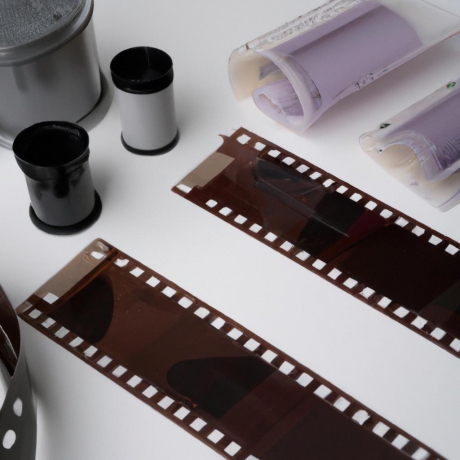Introduction
There's something undeniably enchanting about the 35mm film developing lab. Every frame perfectly portrays a nostalgic and artistic moment in time. For several photographers, the process of processing these valuable rolls of film holds equal significance to the actual act of taking pictures. Although some people might choose to do things on their own at home, there are several professional labs devoted to honing this expertise.
Choosing a reputable 35mm film-developing lab can elevate your photography experience from ordinary to extraordinary. It's important to carefully and precisely preserve memories—it's not just about printing your photos. Explore this guide as we explore the mysteries behind 35mm film processing, offering advice and insights to help you choose the best facility to develop your priceless photos.
Benefits of Using a Film Developing Lab
Using a film-developing lab offers photographers unmatched expertise. These professionals have years of experience working with various types of films. Their knowledge ensures optimal results, bringing out the best in your images. Convenience is another significant benefit. Instead of navigating the complex process yourself, you can simply drop off your rolls and let experts handle it. This saves time and minimizes the risk of mistakes.
Quality control is paramount in any creative pursuit. Labs use high-grade equipment tailored for specific development needs. The result? Consistent quality that enhances the richness of colors and details in every shot. Furthermore, many labs provide additional services like scanning negatives or creating prints directly from your film. This adds versatility to how you share or display your work, making it easier to showcase memories captured on 35mm film effectively.
Choosing a dedicated lab for developing film signifies a commitment to preserving photographic art while enjoying peace of mind throughout the process.
Factors to Consider When Choosing a Film Developing Lab
When selecting a 35mm film developing lab, quality should be your top priority. Look for labs that use professional-grade equipment and experienced technicians. Pricing is another important factor. Different labs offer various pricing structures, so compare costs but don't sacrifice quality for a lower price.
Turnaround time can affect your decision too. If you need your photos quickly, find a lab known for prompt service without compromising on results. Customer reviews provide valuable insights into the lab's reliability and customer service experience. A well-rated lab often reflects consistent performance and satisfaction.
Consider additional services like scanning or prints they might offer. Having everything under one roof simplifies the process and ensures continuity in handling your precious memories.
The Process of Film Development
The process of making a movie is an exciting one. It starts the instant you give a lab your exposed 35mm film to develop. Once in the lab, technicians carefully load your film onto reels. This step ensures it's ready for processing without any light exposure. Next comes the chemical bath. The film is immersed in developer solutions that reveal the latent images captured during shooting. Timing and temperature are crucial here; they can significantly affect image quality.
After development, the film undergoes stopping and fixing processes to halt further reactions. Once these steps are complete, your negatives emerge—ready for printing or scanning. Meticulous care goes into drying the film before packaging it back for you. Each frame tells its own story through this intricate procedure, preserving memories one shot at a time.
Tips for a Successful and High-Quality Film Development Experience
To ensure a successful film development experience, start by choosing the right lab. Research labs that specialize in 35mm film to guarantee expertise and quality. Consider labeling each roll of film with pertinent details like shooting conditions and desired outcomes. This extra information can be invaluable during processing.
Keep an eye on turnaround times. Some labs offer express services for urgent projects, while others may take longer due to demand or complexity. Ask for scans if you plan to share your photos online or print them later. High-resolution digital files can complement physical prints beautifully, allowing you to enjoy both formats seamlessly.
Conclusion
Your experience with 35mm film developing labs may be greatly improved by selecting the best one. Finding a trustworthy collaborator is crucial if you want to capture your moments on camera, regardless of your experience level. It is obvious that working with a professional lab has advantages: skilled processing, excellent prints, and frequently quicker turnaround times.
When choosing a lab for film development, take into account aspects such as accessibility, cost, turnaround time, and services offered. To select the finest alternative for your needs, limit your possibilities by reading reviews and suggestions. The top labs highlighted in this guide offer diverse services tailored to various preferences. Familiarizing yourself with their processes ensures that you'll know what to expect when sending off your precious films.






